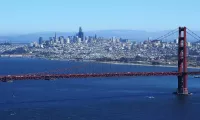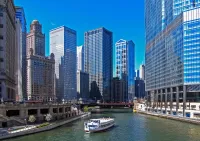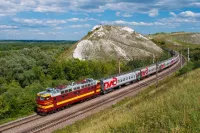The First Transcontinental Railroad, completed between 1863 and 1869, created a 1,911-mile continuous rail line connecting Council Bluffs, Iowa, with the Pacific coast at Oakland, California. Three private companies – Western Pacific Railroad Company, Central Pacific Railroad Company, and Union Pacific Railroad – constructed the line over public lands granted by the U.S. government. Funding came from state and federal subsidy bonds and company-issued mortgage bonds. Western Pacific built 132 miles from Alameda/Oakland to Sacramento, Central Pacific built 690 miles east to Promontory Summit, Utah Territory, and Union Pacific built 1,085 miles west to Promontory Summit.
1 day ago : First Brands bankruptcy exposes Jefferies' fund exposure; creditors claim $2.3bn vanished.
First Brands' bankruptcy led to creditors claiming $2.3bn vanished. Jefferies, the primary bank, opened its books, revealing significant fund exposure, causing shares to fall amidst building fallout from the financial crisis.
1900: Death of Collis Potter Huntington
In 1900, Collis Potter Huntington, the Vice President of the Central Pacific Railroad, passed away. He was one of the four businessmen who formed the Central Pacific Railroad and became wealthy from his association with the railroad.
1901: Union Pacific Initially Takes Over Southern Pacific
In 1901, the Union Pacific initially acquired the Southern Pacific Railroad, gaining control of the Central Pacific's direct route to San Francisco.
1904: Completion of the Lucin Cutoff
In 1904, with the completion of the Lucin Cutoff, the Promontory Summit route was bypassed.
1924: Release of "The Iron Horse"
In 1924, John Ford's silent movie "The Iron Horse" was released, capturing the strong nationalism associated with public support for the transcontinental railroad project.
1925: Tunnel #41 Opened
In 1925, Tunnel #41, also known as "The Big Hole", was opened as part of the double-tracking of the summit section of the Sierra grade. This tunnel, running under Mt. Judah, provided a more maintainable route through the Sierra Nevada mountains.
1930: Rail Bridge Replaced Benicia Train Ferries
In 1930, a rail bridge across the Carquinez Strait replaced the Benicia train ferries. This change provided a more direct route from the Central Valley to the Bay Area.
1939: Release of "Union Pacific" Film
In 1939, the film "Union Pacific", directed by Cecil B. DeMille and starring Joel McCrea and Barbara Stanwyck, was released, depicting a fictional story of the Central Pacific investor Asa Barrows attempting to obstruct the Union Pacific's efforts to reach Ogden, Utah.
1942: Promontory Summit Rails Recycled for WWII
In 1942, the rails at Promontory Summit were removed and recycled to support the World War II effort, beginning with a ceremonial "undriving" at the Last Spike location.
1957: Authorization of Golden Spike National Historic Site
In 1957, Congress authorized the establishment of the Golden Spike National Historic Site to commemorate the completion of the transcontinental railroad.
1958: Airing of Union Pacific Western Television Series
From 1958 until 1959, the Union Pacific Western television series, starring Jeff Morrow, Judson Pratt, and Susan Cummings, aired in syndication, reportedly inspired by the 1939 film "Union Pacific".
1959: Airing of Union Pacific Western Television Series
From 1958 until 1959, the Union Pacific Western television series, starring Jeff Morrow, Judson Pratt, and Susan Cummings, aired in syndication, reportedly inspired by the 1939 film "Union Pacific".
1962: Release of "How the West Was Won"
In 1962, the film "How the West Was Won" featured a segment dedicated to the construction of the transcontinental railroad, including a famous scene of a buffalo stampede over the railroad.
1962: Overland Route Passenger Rail Service Ended
In 1962, the transcontinental line, also known as the Overland Route, discontinued its principal passenger rail service to Chicago, which had operated for many years.
1968: Release of "Once Upon a Time in the West"
In 1968, the epic Spaghetti Western "Once Upon a Time in the West", directed by Sergio Leone, was released, using the construction of the transcontinental railroad as its backdrop.
1981: Publication of "A Man of Destiny"
In 1981, Graham Masterton's novel "A Man of Destiny" (published in the UK as Railroad) was published, offering a fictionalized account of the construction of the transcontinental railroad.
1993: Southern Pacific Railroad Closes Track Section
In 1993, the Southern Pacific Railroad, which operated the CPRR-built Oakland-Ogden line, closed and removed a 6.7-mile section of Track #1 near Donner Pass. This led to the abandonment of several tunnels and snowsheds due to high maintenance costs during harsh Sierra winters.
1993: Publication of "Ten Mile Day"
In 1993, the children's book "Ten Mile Day" by Mary Ann Fraser was published, recounting the story of the Central Pacific's record-setting achievement of laying 10 miles of track in a single day to win a $10,000 bet.
1996: Southern Pacific Sold to Union Pacific
In 1996, the Southern Pacific Railroad was sold to the Union Pacific, reuniting the two railroads after a period of separation due to monopoly concerns.
1999: Publication of "The Great Railroad Race"
In 1999, Kristiana Gregory's book "The Great Railroad Race" (part of the "Dear America" series) was published, presented as a fictional diary chronicling the excitement surrounding the end of the railroad construction.
1999: Assassination Attempt in "Wild Wild West"
In 1999, the film "Wild Wild West" featured the joining ceremony of the transcontinental railroad as the setting for an assassination attempt on U.S. President Ulysses S. Grant.
2000: Release of "The Claim"
In 2000, the film "The Claim" was released, where the main character is a surveyor for the Central Pacific Railroad, and the plot involves a frontier mayor's efforts to have the railroad pass through his town.
2002: Release of "Spirit: Stallion of the Cimarron"
In 2002, the DreamWorks Animation movie "Spirit: Stallion of the Cimarron" was released, featuring the title character, a horse named Spirit, being delivered to a transcontinental railroad work site to pull a steam locomotive.
2002: American Experience Series Documents Railway
In the 2002-2003 season, the American Experience series documented the railway in the episode titled "Transcontinental Railroad".
2003: American Experience Series Documents Railway
In the 2002-2003 season, the American Experience series documented the railway in the episode titled "Transcontinental Railroad".
2004: BBC Documentary "The Line"
In 2004, the BBC documentary series "Seven Wonders of the Industrial World" covered the building of the railway in episode 6, titled "The Line".
May 10, 2006: Utah State Quarter Design Announced
On May 10, 2006, Utah announced that the design for its state quarter would depict the driving of the Last Spike, commemorating the completion of the transcontinental railroad.
2010: Doctor Who Audiobook "The Runaway Train"
In 2010, the sci-fi television show Doctor Who featured the transcontinental railroad in a BBC audiobook entitled "The Runaway Train", read by Matt Smith and written for audio by Oli Smith.
2018: Railway Empire Video Game
In 2018, Kalypso Media's video game "Railway Empire" featured a campaign mode covering the construction of the transcontinental railroad and included key figures such as Thomas Durant and Collis Huntington.
2019: Golden Spike National Historic Site Redesignated
In 2019, the Golden Spike National Historic Site was redesignated as the Golden Spike National Historical Park.
2024: Equivalent Wage in 1867
In 2024, the 1867 wage of $35 paid by the Central Pacific Railroad to its Chinese laborers is equivalent to $790.
Mentioned in this timeline

San Francisco is a major commercial financial and cultural hub...
World War II - was a global conflict between the...

Books are a means of storing information as text or...

Chicago Illinois is the third-most populous city in the United...
Nevada a landlocked state in the Western US is the...

Trains are a connected series of vehicles traveling on railway...
Trending
Munetaka Murakami is a prominent Japanese professional baseball infielder currently playing for the Tokyo Yakult Swallows in Nippon Professional Baseball...
4 days ago French Prime Minister Resigns, Macron Appoints New Government Amid Budget Concerns.

3 months ago XRP (Ripple) Surges: Rally Continues? Altcoin's Trade Potential Beyond the 'XRP Army'.
2 hours ago Morris Chestnut discusses 'Watson,' 'Boyz n the Hood' legacy, favorite JAY-Z tracks, and marriage.
4 months ago Gunmen Kill Over 100 in Benue State, Nigeria: Amnesty International Reports

Billie Eilish is a celebrated American singer-songwriter who rose to prominence in with her debut single Ocean Eyes co-created with...
Popular

Charlie Kirk is an American right-wing political activist entrepreneur and...

Candace Owens is an American political commentator and author known...

Greta Thunberg is a Swedish climate activist who gained international...

Jupiter is the fifth and largest planet from the Sun...

Kashyap Pramod Patel is an American lawyer and former federal...
Turning Point USA TPUSA is a conservative nonprofit organization founded...

